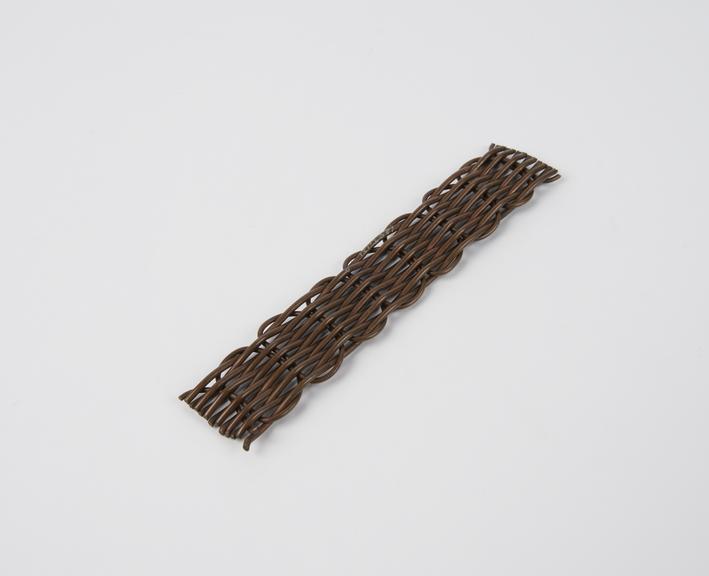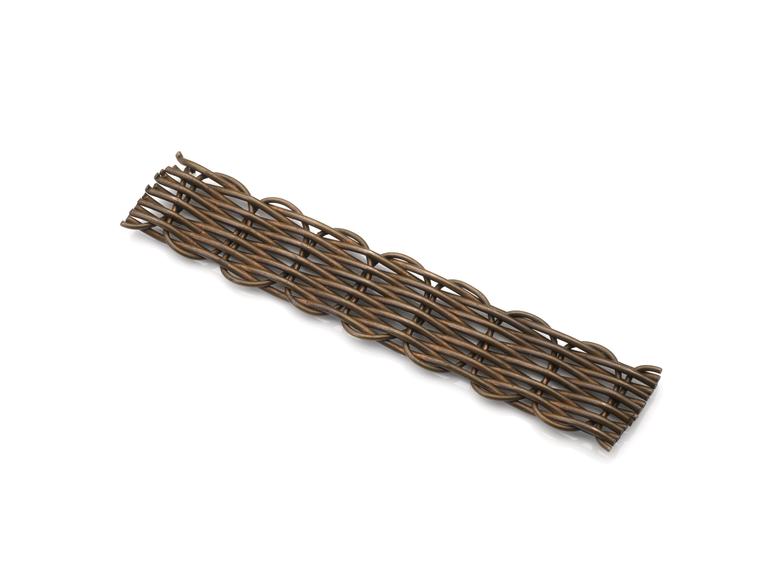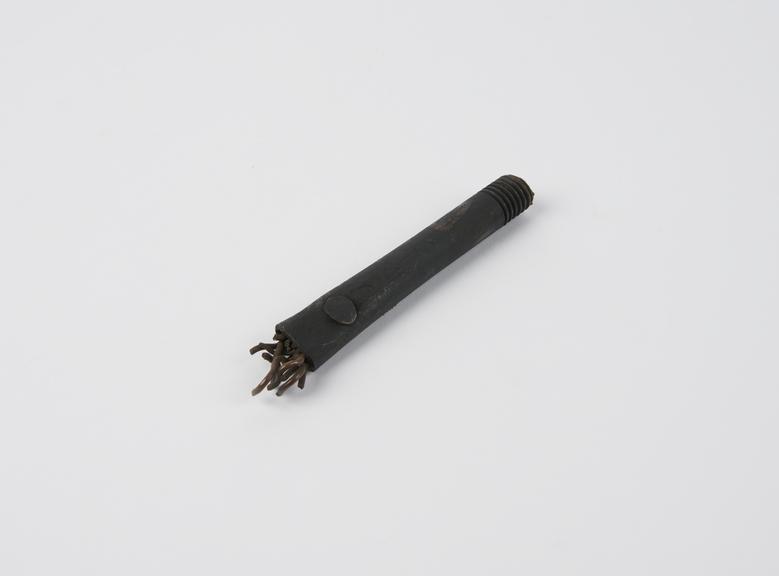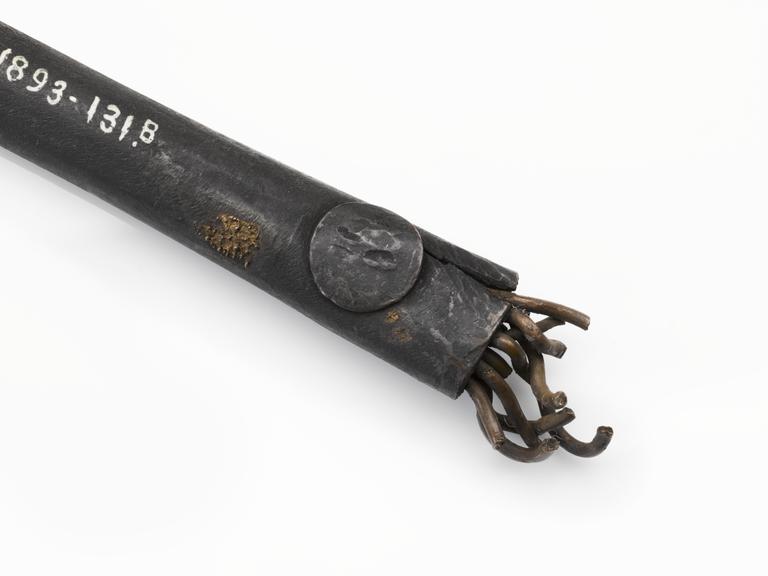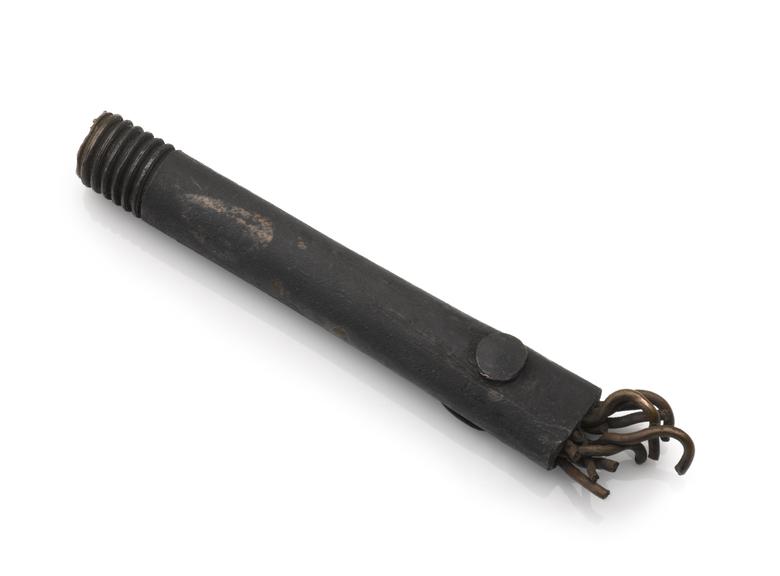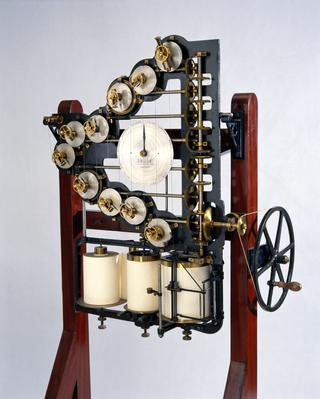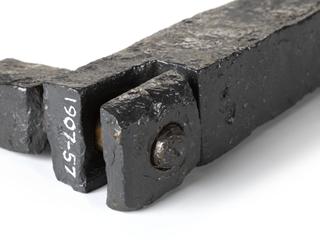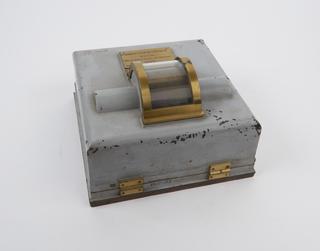Spratt’s Patent Copper Lightning Conductor
Woven copper lightning conductor. Made by James Spratt in London around 1860.
More
Benjamin Franklin invented the lightning rod in 1749. In 1860, electrician James Spratt patented his innovative woven copper lightning conductor which represented an advance in safety.
Spratt is perhaps better known as the first manufacturer of dog biscuits. He employed Charles Cruft, who went on to establish Crufts, the world-famous show for dog breeders.
- Measurements:
-
overall: 3 mm x 130 mm x 23 mm,
- Materials:
- copper (metal)
- Object Number:
- 1893-131 Pt1
- type:
- lightning rods
- Image ©
- The Board of Trustees of the Science Museum

